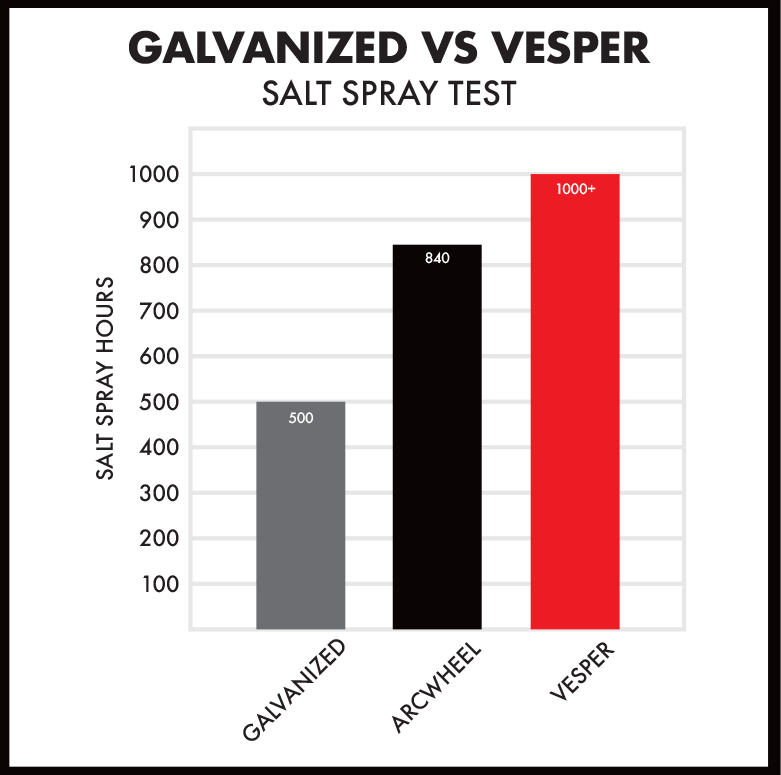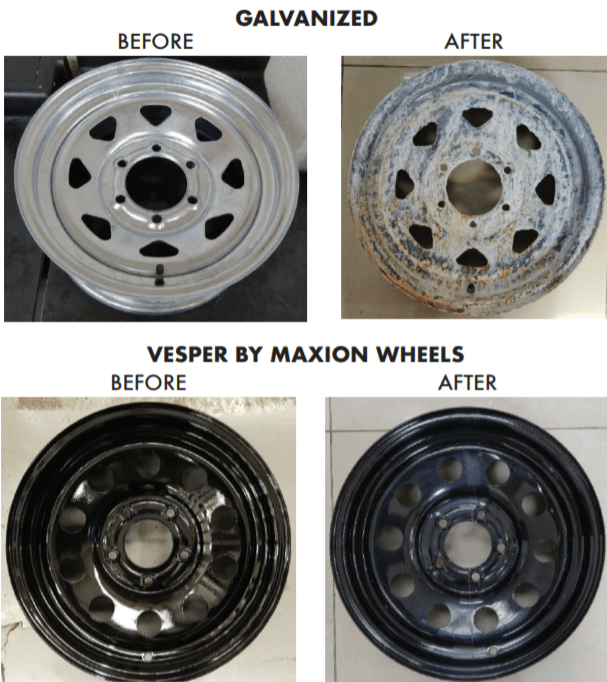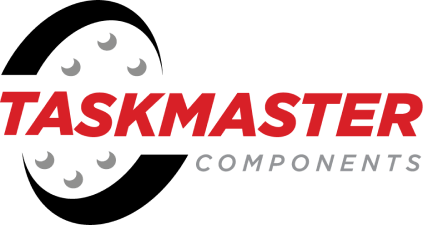SALT SPRAY TESTING
A salt spray test uses a closed testing chamber in which a salt water solution is sprayed through nozzles using pressurized air. A wheel is continuously exposed to this extremely corrosive environment inside the chamber, and then removed from the chamber and evaluated. This test simulates
long term exposure to harsh conditions.

Galvanization vs. Modern Wheel Finishes
Early Steel Wheel Protective Coatings
Before the advent of electrodeposition coating, the only protective finishes for steel wheels were powder
coat, epoxy wet paint, and galvanized. Due to their inability to bond with steel, powder coating and epoxy wet paint offered little resistance in the salt spray test, on average lasting barely 300 hours. Galvanization is not merely a coating; it also provides cathodic protection and thus allows galvanized steel to last 500 hours in the salt spray chamber. Painting and galvanization were the only steel wheel protective offerings until the late 1970s.
E-Coating
E-coating, also known as electrodeposition coating, uses an electrical current to deposit paint on a surface. This process works according to the principle, “opposites attract.” E-coating was invented in the 1960s but wasn’t employed in the automotive industry until the late 1970s; it became the industry standard in the late 1980s/early 1990s. E-coating allows for extremely accurate control of finish thickness because it relies only on voltage; once it is coated and insulated, no more coating will build up. The galvanization process relies on amperage and time to build up coating thickness, which can fluctuate depending on the operator.

Modern Steel Wheel Finishes
Today, most steel wheels employ a three-step finishing process:
- Zinc Phosphate Pretreatment
- E-Coat
- Top-Coat (wet paint or powder coat)
Depending on the manufacturer, facility capabilities, and the quality of materials used in the three-step
finishing process, today’s steel wheels can provide 800-1000 hours of salt spray resistance. Taskmaster
Component’s Vesper by Maxion Wheels series are epoxy painted and give a minimum of 1000 hours of salt
resistance, and its Arcwheel series with a similar finishing process lasts 840 hours.
Conclusion
Hot-dip galvanizing provided superior corrosion protection for steel wheels before the e-coat process was
invented. Today, Epoxy paint over an e-coat application is far superior to galvanization. Most importantly to the end-user, epoxy painted wheels look better at the start and will also look better throughout the wheel’s life.
